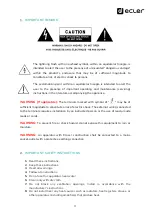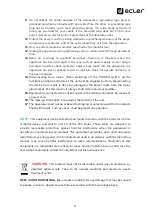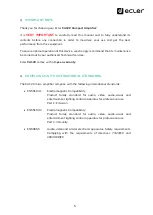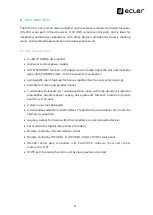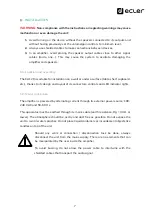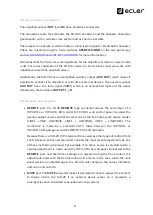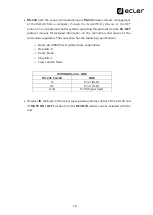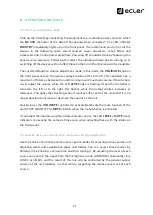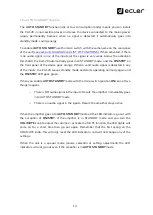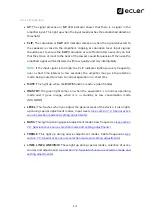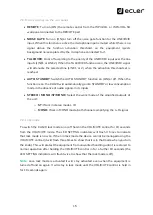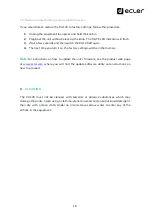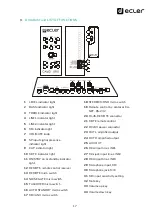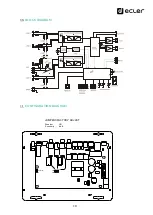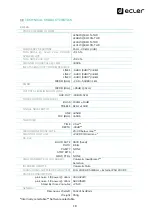
14
7.4. LED indicators
•
SP
: The signal presence or
SP
LED indicator shows that there is a signal in the
amplifier input. This light up when the input level reaches the established detection
threshold.
•
CLIP
: The saturation or
CLlP
LED indicator comes on when the signal delivered to
the speakers is close to the amplifier's clipping or saturation level. Input signals
should be set to ensure the
CLIP
(saturation or cut off) indicators never stay on, but
that they do so at most to the beat of the lowest sound frequencies. Otherwise the
amplified signal will be distorted with low quality and low intelligibility.
Note:
If the input signal is too high, the CLIP indicator lighting up very frequently
over a short time interval (a few seconds), the amplifier may go into protection
mode, being muted to return to normal operation in a short time
•
MUTE
: This light up when the
MUTE
function is active (silent mode)
•
ON/STBY
: the green light comes on when the equipment is in normal operating
mode and it goes orange when it is in standby or low consumption mode
(STANDBY).
•
LEVEL:
This flashes when you adjust the general level of the device. It also lights
up during special adjustment modes, input levels (
see section 7.2. Special active
source selection mode and setting adjustments
•
BASS:
This light up during special adjustment modes bass frequencies (
7.2. Special active source selection mode and setting adjustments
•
TREBLE
: This light up during special adjustment modes, treble frequencies (
section 7.2. Special active source selection mode and setting adjustments
•
LINE1, LINE2, LINE3/MIC
: These light up during special modes, selection of active
sources and adjustments (
see section 7.2. Special active source selection mode and



